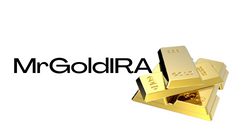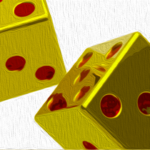Imagine a world where every click online incurs just a fraction of a penny. What if you could pay for your favorite news site, streaming service, or even daily email usage in tiny increments rather than in one lump sum at the end of the month? This concept of "micropayments" has long tantalized the internet economy, echoing since the early days of the web. However, as elucidated in Nick Szabo’s seminal 1999 paper, Micropayments and Mental Transaction Costs, the barriers to widespread adoption extend beyond technological constraints.
The Core Arguments of Szabo’s Paper
In his groundbreaking paper, Szabo shed light on a fundamental truth often overlooked by technologists: while computational costs can be minimized, the cognitive burden of evaluating the value of every small payment persists. The concept of mental transaction costs, as Szabo coined it, underscores the cognitive overhead of determining whether a digital interaction is worth paying for.
The Dilemma of Mental Transaction Costs
Szabo’s central contention is that consumers face a significant cognitive hurdle in making even the minutest payment decisions. The mental strain of assessing the worth of each click, article, or service can quickly lead to decision fatigue, outweighing the perceived simplicity of micropayments. Consumers tend to gravitate towards flat fees and bundled subscriptions, prioritizing peace of mind over potential savings.
Sources of Cognitive Costs
Three primary sources of cognitive costs are outlined in Szabo’s paper:
- Uncertain Cash Flows: Consumers often lack foresight into their exact earnings and expenses, making flat fees and bundled subscriptions more appealing for budgeting.
- Assessing Product Quality: The mental effort required to evaluate the quality of digital goods before purchase can outweigh the actual micropayment.
- Decision-Making Complexity: Our brains struggle with numerous micro-decisions, highlighting the challenge of evaluating the value of each interaction.
Challenges Faced by Micropayments
Despite technological advancements, micropayments have faced several hurdles:
- The Early Internet Payment Hype: Systems like NetBill and Millicent promised seamless micro-billing, yet user adoption remained limited due to mental transaction costs.
- The Rise of Ad-Funded Services: Free-to-consume models supported by ads gained prominence, reducing the mental burden on users compared to micropayments.
- AI Solutions and Intelligent Agents: While AI holds promise in automating micro-decisions, building trust in personalized agents remains a significant challenge.
The Evolution of Micropayments
Despite persistent challenges, recent developments have reshaped the landscape:
- Improved User Interfaces: Advances in UI design have simplified payment processes, yet the cognitive burden of micropayments persists.
- Blockchain & Cryptocurrencies: The Lightning Network has enhanced payment efficiency, though the core issue of mental transaction costs remains.
- AI Integration: AI tools enable personalized experiences, offering potential solutions to streamline micropayments.
Future Prospects for Micropayments
To achieve widespread adoption, micropayments must minimize the mental transaction costs for users. Innovative business models and seamless user experiences are key to unlocking the potential of micropayments:
- Pay-Per-API Call: Micropayments thrive in the AI SaaS sector, driven by usage-based models that align with business needs.
- Tips & Donations: Voluntary payments for creators leverage community spirit, bypassing the mental resistance to micropayments.
Designing intuitive interfaces and automated systems can further enhance the practicality of micropayments, paving the way for a potential renaissance in digital transactions.
Conclusion: Navigating Mental Transaction Costs
Szabo’s seminal insights on micropayments and mental transaction costs remain pertinent in the digital landscape. While technological advancements continue to reshape payment dynamics, addressing the psychology of consumer behavior is paramount for the success of micropayments. By minimizing cognitive burdens and optimizing user experiences, the future of micropayments holds promise, provided they align with human preferences for simplicity and convenience.
Frequently Asked Questions
Can I buy gold with my self-directed IRA?
However, gold can only be purchased with your self-directed IRA. To do so, you must first open a brokerage account at TD Ameritrade. Transfer funds from an existing retirement account are also possible.
Individuals can contribute as much as $5,500 per year ($6,500 if married filing jointly) to a traditional IRA. Individuals can contribute up to $1,000 annually ($2,000 if married and filing jointly) directly to a Roth IRA.
You should consider buying physical gold bullion if you decide to invest in it. Futures contracts, which are financial instruments based upon the price of gold, are financial instruments. They allow you to speculate on future prices without owning the metal itself. You can only hold physical bullion, which is real silver and gold bars.
How much gold should your portfolio contain?
The amount that you want to invest will dictate how much money it takes. For a small start, $5k to $10k is a good range. Then as you grow, you could move into an office space and rent out desks, etc. You don't need to worry about paying rent every month. Rent is only paid per month.
It is also important to decide what kind of business you want to run. My website design company charges clients $1000-2000 per month depending on the order. So if you do this kind of thing, you need to consider how much income you expect from each client.
Freelance work is not likely to pay a monthly salary. The project pays freelancers. You may get paid just once every 6 months.
So you need to decide what kind of income you want to generate before you know how much gold you will need.
I recommend starting with $1k to $2k of gold, and then growing from there.
Is it a good retirement strategy to buy gold?
Buying gold as an investment may not seem very appealing at first glance, but when you consider how much people spend on average on gold per year worldwide, it becomes worth considering.
Physical bullion bars are the most popular way to invest in gold. You can also invest in gold in other ways. It is best to research all options and make informed decisions based on your goals.
If you don’t have the funds to invest in safe places, such as a safe deposit box or mining equipment companies, buying shares of these companies might be a better investment. If you require cash flow, gold stocks can work well.
You also can put your money into exchange-traded funds (ETFs), which essentially give you exposure to the price of gold by holding gold-related securities instead of actual gold. These ETFs usually include stocks of precious metals refiners or gold miners.
How much money should my Roth IRA be funded?
Roth IRAs allow you to deposit your money tax-free. You can't withdraw money from these accounts before you reach the age of 59 1/2. However, if your goal is to withdraw funds before that time, there are certain rules you must observe. First, your principal (the original deposit amount) cannot be touched. This means that you can't take out more money than you originally contributed. If you are able to take out more that what you have initially contributed, you must pay taxes.
The second rule is that you cannot withdraw your earnings without paying income taxes. So, when you withdraw, you'll pay taxes on those earnings. For example, let's say that you contribute $5,000 to your Roth IRA every year. Let's also assume that you make $10,000 per year from your Roth IRA contributions. Federal income taxes would apply to the earnings. You would be responsible for $3500 You would have $6,500 less. This is the maximum amount you can withdraw because you are limited to what you initially contributed.
So, if you were to take out $4,000 of your earnings, you'd still owe taxes on the remaining $1,500. You would also lose half of your earnings because they are subject to another 50% tax (half off 40%). Even though you had $7,000 in your Roth IRA account, you only received $4,000.
There are two types if Roth IRAs: Roth and Traditional. Traditional IRAs allow you to deduct pretax contributions from your taxable income. You can withdraw your contributions plus interest from your traditional IRA when you retire. You have the option to withdraw any amount from a traditional IRA.
Roth IRAs do not allow you to deduct your contributions. After you have retired, the full amount of your contributions and accrued interest can be withdrawn. Unlike a traditional IRA, there is no minimum withdrawal requirement. You don't have to wait until you turn 70 1/2 years old before withdrawing your contribution.
Statistics
- The price of gold jumped 131 percent from late 2007 to September 2011, when it hit a high of $1,921 an ounce, according to the World Gold Council. (aarp.org)
- You can only purchase gold bars at least 99.5% purity. (forbes.com)
- If you accidentally make an improper transaction, the IRS will disallow it and count it as a withdrawal, so you would owe income tax on the item's value and, if you are younger than 59 ½, an additional 10% early withdrawal penalty. (forbes.com)
- (Basically, if your GDP grows by 2%, you need miners to dig 2% more gold out of the ground every year to keep prices steady.) (smartasset.com)
- Contribution limits$6,000 (49 and under) $7,000 (50 and up)$6,000 (49 and under) $7,000 (50 and up)$58,000 or 25% of your annual compensation (whichever is smaller) (lendedu.com)
External Links
wsj.com
- Saddam Hussein's InvasionHelped Uncage a Bear In 90 – WSJ
- Do you want to keep your IRA gold at home? It's Not Exactly Legal – WSJ
finance.yahoo.com
law.cornell.edu
- 7 U.S. Code SS 7 – Designation of boards of trade as contract markets
- 26 U.S. Code SS 408 – Individual retirement plans
forbes.com
- Gold IRA, Add Sparkle to Your Retirement Nest egg
- Understanding China's Evergrande Crisis – Forbes Advisor
How To
Investing in gold or stocks
Gold investing as an investment vehicle can seem extremely risky these days. The reason behind this is that many people believe that gold is no longer profitable to invest in. This belief arises because most people believe that the global economy is driving down gold prices. They fear that investing in gold will result in a loss of money. However, investing in gold can still provide significant benefits. Below we'll look at some of them.
The oldest form of currency known to mankind is gold. It has been used for thousands of years. It is a valuable store of value that has been used by many people throughout the world. It is still used as a payment method by South Africa and other countries.
It is important to determine the price per Gram that you will pay for gold when making a decision about whether or not to invest. If you're interested in buying gold bullion, it is crucial that you decide how much per gram. You can always ask a local jeweler what the current market rate is if you don't have it.
It's worth noting, however, that while gold prices have fallen recently the cost of producing gold is on the rise. So, although gold prices have declined in recent years, the cost of producing it has not changed.
When deciding whether to buy gold, another thing to consider is how much gold you intend on buying. It makes sense to save any gold you don't need to purchase if your goal is to use it for wedding rings. This is not a wise decision if you're looking to invest in long-term assets. If you sell your gold for more than you paid, you can make a profit.
We hope this article has given you an improved understanding of gold investment tools. We recommend you do your research before making any final decisions. Only after you have done this can you make an informed choice.
—————————————————————————————————————————————————————————————-
By: Jacob Brown
Title: Szabo’s Micropayments: A Deep Dive into Mental Transaction Costs
Sourced From: bitcoinmagazine.com/technical/szabos-micropayments-and-mental-transaction-costs-25-years-later-
Published Date: Tue, 11 Feb 2025 18:21:31 GMT

















